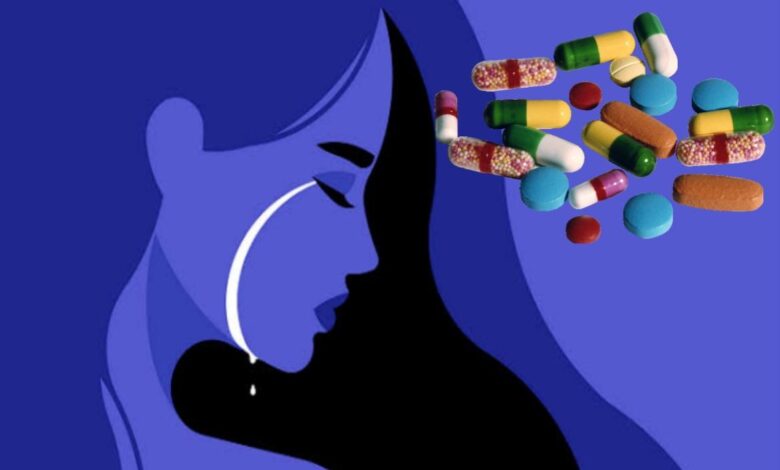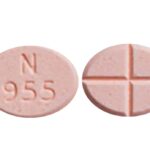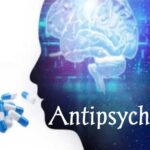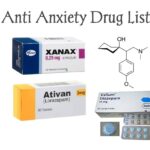Antidepressants: Types, Uses, Side Effects, Abuse

Antidepressants are a class of medications that alleviate the symptoms of depressive disorders by initiating processes that correct chemical imbalances of neurotransmitters in the brain. Chemical imbalances may be responsible for changes in mood and behavior. Neurotransmitters are vital, as they are the communication link between nerve cells in the brain.
Neurotransmitters reside within vesicles found in nerve cells, which are released by one nerve and taken up by other nerves. Neurotransmitters not taken up by other nerves are taken up by the same nerves that released them. This process is called “reuptake.” The prevalent neurotransmitters in the brain specific to depression are serotonin, dopamine, and norepinephrine (also called noradrenaline).
How do antidepressants work?
Antidepressants work by inhibiting the reuptake of specific neurotransmitters, hence increasing their levels around the nerves within the brain, such as selective serotonin reuptake inhibitors (SSRIs), antidepressants that will affect serotonin levels in the brain.
What conditions are antidepressants used for?
Antidepressants are used to treat several conditions. They include but are not limited to: depression, generalized anxiety disorder, agitation, obsessive compulsive disorders (OCD), manic-depressive disorders, childhood enuresis (bedwetting), major depressive disorder, diabetic peripheral neuropathic pain, neuropathic pain, social anxiety disorder, posttraumatic stress disorder (PTSD), etc.
Some off-label uses of antidepressants include, but are not limited to fibromyalgia, chronic urticaria (hives), hot flashes, hyperhidrosis (drug-induced), pruritus (itching), premenstrual symptoms, bulimia nervosa, Tourette syndrome, binge eating disorder, etc.
What are the 5 types of antidepressants?
Most antidepressants relieve depression by affecting these neurotransmitters, sometimes called chemical messengers, which aid in communication between brain cells. Each type (class) of antidepressant affects these neurotransmitters in slightly different ways.
Many types of antidepressant medications are available to treat depression, including:
Selective serotonin reuptake inhibitors (SSRIs). Doctors often start by prescribing an SSRI. These medications generally cause fewer bothersome side effects and are less likely to cause problems at higher therapeutic doses than other types of antidepressants are. SSRIs include fluoxetine (Prozac), paroxetine (Paxil, Pexeva), sertraline (Zoloft), citalopram (Celexa), and escitalopram (Lexapro).
Serotonin and norepinephrine reuptake inhibitors (SNRIs). Examples of SNRI medications include duloxetine (Cymbalta), venlafaxine (Effexor XR), desvenlafaxine (Pristiq), and levomilnacipran (Fetzima).
Atypical antidepressants. These medications don’t fit neatly into any of the other antidepressant categories. More commonly prescribed antidepressants in this category include trazodone, mirtazapine (Remeron), vortioxetine (Trintellix), vilazodone (Viibryd), and bupropion (Wellbutrin SR, Wellbutrin XL, others). Bupropion is one of the few antidepressants not frequently associated with sexual side effects.
Tricyclic antidepressants. Tricyclic antidepressants — such as imipramine (Tofranil), nortriptyline (Pamelor), amitriptyline, doxepin, and desipramine (Norpramin) — tend to cause more side effects than newer antidepressants. So tricyclic antidepressants generally aren’t prescribed unless you’ve tried other antidepressants first without improvement.
Monoamine oxidase inhibitors (MAOIs). MAOIs — such as tranylcypromine (Parnate), phenelzine (Nardil), and isocarboxazid (Marplan) — may be prescribed, often when other medications haven’t worked, because they can have serious side effects. Using an MAOI requires a strict diet because of dangerous (or even deadly) interactions with foods — such as certain cheeses, pickles, and wines — and some medications, including pain medications, decongestants, and certain herbal supplements. Selegiline (Emsam), an MAOI that you stick on your skin as a patch, may cause fewer side effects than other MAOIs. These medications can’t be combined with SSRIs.
Other medications. Your doctor may recommend combining two antidepressants, or other medications may be added to an antidepressant to enhance antidepressant effects.
Are there differences among antidepressants?
Antidepressants differ in their effects on neurotransmitters, established uses, adverse effects, and drug interactions. All antidepressants that are used for depression are effective; there is no evidence that one antidepressant is more effective than another. However, patients may respond to or tolerate one antidepressant, and not respond to or tolerate another antidepressant.
What are the side effects of antidepressants?
Antidepressants that belong to the same class of antidepressants produce similar side effects. Antidepressants may cause withdrawal symptoms if abruptly discontinued. Withdrawal symptoms include nausea, vomiting, dizziness, headache, irritability, sleep disturbance, nightmares, psychosis, and seizures. All antidepressants have a warning about use in children and adolescents. Antidepressants increased the risk of suicidal thinking and suicidal behavior in short-term studies in children and adolescents with depression and other psychiatric disorders. Anyone considering the use of antidepressant in a child or adolescent must balance this risk of suicide with the clinical need for the drug. Patients who are started on therapy should be closely observed for clinical worsening, suicidal thoughts or unusual changes in behavior.
Antidepressants Safety
The risk that antidepressants will incite violent or self-destructive actions is the subject of continuing controversy. In 2004, the FDA first initiated a Black Box Warning on SSRIs — its strongest available measure short of withdrawing a drug from the market. The warning is still placed on package inserts for all antidepressants in common use. It mentions the risk of suicidal thoughts, hostility, and agitation in children, teens, and young adults.
The number of antidepressant prescriptions for children and teens, which rose rapidly throughout the 1990s, fell precipitously after the Black Box Warning was issued. However, there is the other side of undertreatment of depression. The lifetime suicide rate of people with major depression is 15%, and depression can also be lethal in other ways; for example, a history of major depression doubles the risk of heart disease.
Regular follow-up and close monitoring can help prevent a bad outcome. Patients should be warned that there is a slight chance they will feel worse for a while, and they should let their prescribing clinicians know immediately if they begin to feel worse or develop new symptoms, especially after changing the medication or the dose.




